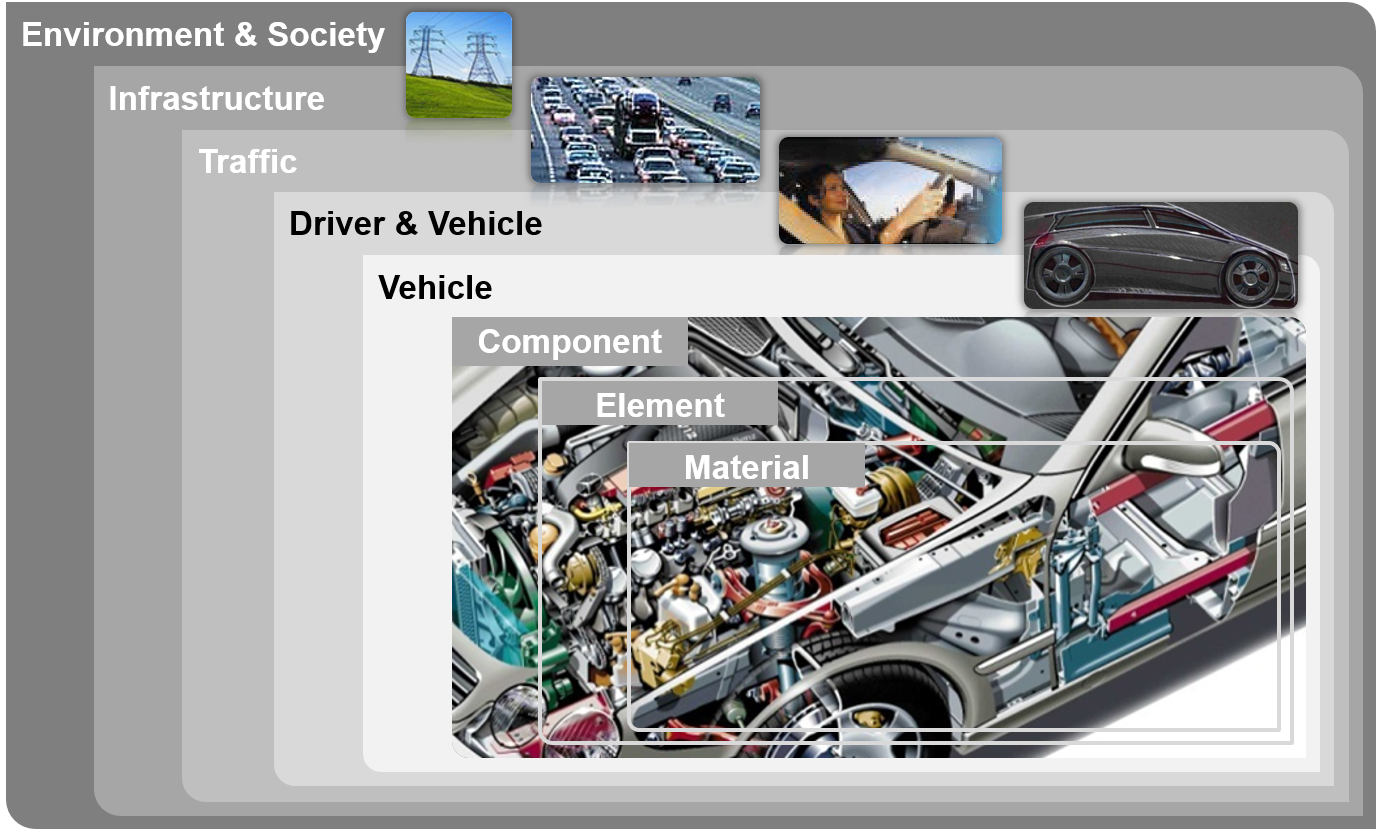KIT Mobility Systems Center - Research for Seamless Mobility
The transport of goods and passengers with changing requirements in terms of ecology, energy efficiency, and quality of life will influence the development of future mobility concepts in many respects. On the other hand, the development of new technologies can bring up disruptive potential for the future of mobility as for example automated driving does at the moment. Only the overall optimization of all aspects of mobility ranging in a system of Seamless Mobility from specific technology improvements to the social embedding of user needs can leverage the full potential of future developments.
At Karlsruhe Institute of Technology (KIT), mobility (and mobility-related issues) play an important role in nearly all fields of research and is one of three profile sharpening topics. The KIT Mobility Systems Center pools the vast competencies and resources in the field of ground-based mobility to develop multi-disciplinary solutions for tomorrow’s mobility and traffic. The KIT Mobility Systems Center offers a deep understanding of mobility as a system of systems and the implementation of the corresponding methods and processes towards Seamless Mobility. This covers the acquisition of fundamental know-how as well as the development of ideas for application, systems-oriented product development, and the fabrication of small series.
In this way, the large innovation potential of KIT is strengthened sustainably and made visible for everyone. It is the basis of the successful work with research institutes, students, and external cooperation partners from industry.
Vision
The KIT Mobility Systems Center aims to redefine scientifically the research of the interaction between human, vehicle and infrastructure, driven by the cognition that mobility development needs to be shaped sustainably and fit for the future.
The researchers at KIT Mobility Systems Center develop new impulses and ideas for future earthbound mobility systems for transportation of people and goods.
The motivation to design sustainable mobile systems for the future at KIT center stems from our understanding of
- The enormous economic importance of mobility systems as consumption and production factor impacting the gross national product
- The societal relevance of the topic
- The ecological necessity of sustainable mobility systems
- The improved utilization of resources due to mobile systems
- System safety and reliability for optimal usability by humans
At KIT Mobility Systems Center researchers get together in order to advance the mobility development with the interface human-vehicle-infrastructure at a high level while working with the System-of-Systems approaches of modern system theory.
The KIT Mobility Systems Center sees itself as a profile-building element of KIT. The unique characteristic of the center lies within its scientific examination of all earthbound mobility subsystems and their interactions.
Multidisciplinary research and innovation projects are defined and acquired at KIT Mobility Systems Center and a common platform for scholarly exchange is provided. This is accomplished through
- Joint research objects
- Common software/hardware
- Combined research organization
- Shared internal and external communication interfaces and events
The KIT Mobility Systems Center provides a structure for national and international networking and for joint acquisition of research funds on all levels.
The development of teaching offers for degree candidates, graduates, PhD students as well as extra occupational postgraduate education is a dedicated goal.
The KIT Mobility Systems Center comprehensively represents the knowledge triangle research – teaching – innovation for mobility.
Scenarios
In order to optimally develop a complete mobility system ranging from pedestrians to commercial goods transportation as Seamless Mobility, a holistic, cross-domain view on the mobility system as an SoS is required. It has to cope with the complexity, the interconnectedness of individual transportation solutions, as well as increasing uncertainty and variation in multiple dimensions. The Seamless Mobility Framework SMF – as a generic approach – is specifically tailored for mobility systems, i.e. it addresses systems of physically moving objects and persons within a capacity restricted infrastructure with positive and negative side effects on society. With leading Experts scenarios were derived which describe the future of Seamless Mobility in 2035.
Hereby, the relevant factors, such as safety, reliability, social and user acceptance as well as the role of intermodal mobility solutions in mixed traffic were considered, analyzed and populated with varying values. These resulting scenarios were subsequently mapped into concise scenario stories for a typical urban area, such as Karlsruhe.
A positive and an negative example of scenario stories are presented in the listed videos:

